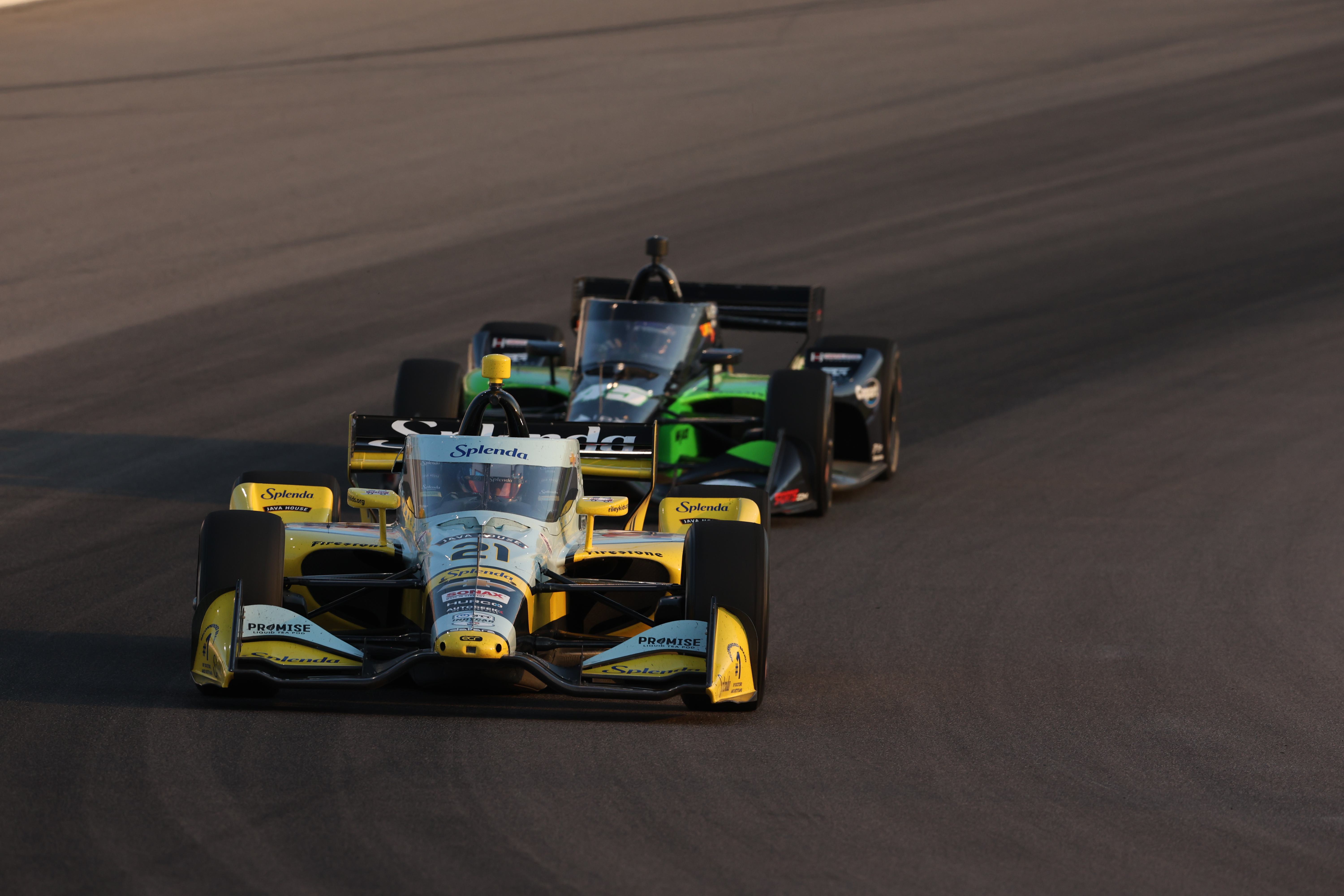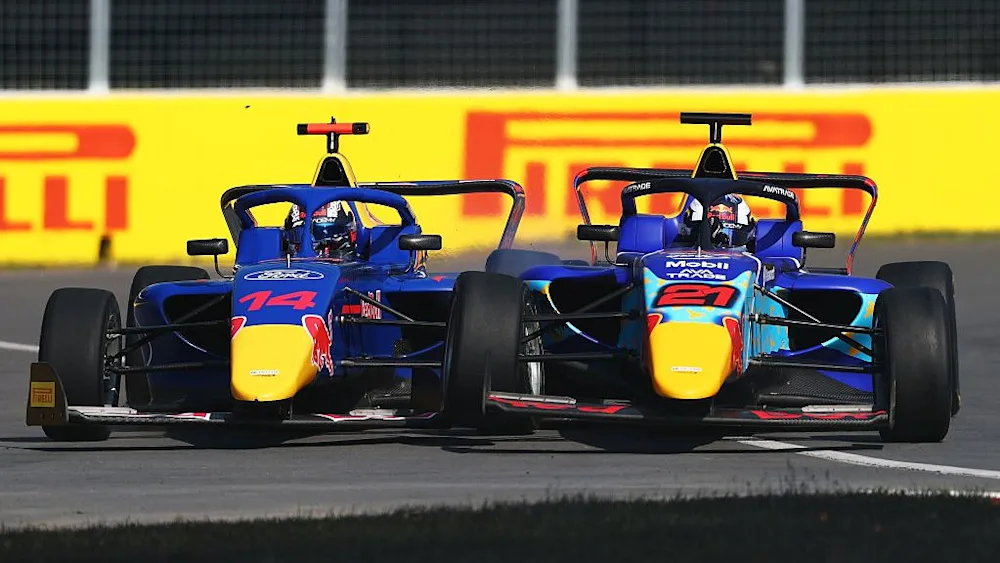Eau Rouge to Parabolica: Iconic Turns That Define F1 Tracks
- Cameron Gale
- Oct 30, 2023
- 5 min read
Updated: Jan 3
Written by Cameron Gale, Edited by Vyas Ponnuri
From Eau Rouge to Stowe, and many more along the way, the Formula One calendar is filled with plenty of famous corners, each having a unique history and significance to boast about.
Recognised as the slowest corner of the F1 calendar, the Monaco Casino Hairpin leads our list. As well as being taken at just 30mph, another unique factor includes its changing name. Once known as the ‘Station’ and ‘Lowes’ hairpin, the title fluctuates depending on the owner of the hotel right opposite the corner. This corner is not known for overtaking as it is quite tight meaning you’d have to trust the driver you are side-by-side with or it could end in disaster for both of you.
In recent years it was Mick Schumacher and Nikita Mazepin who went wheel-to-wheel through the iconic corner, as the German forced his Haas teammate to concede the position around the outside.However, the most impressive overtake came from Force India's Adrian Sutil, when he sent it down the inside of Jenson button in 2014, forcing the Mclaren driver to surrender his place, for fear of colliding with the barrier.

Now we head to Spa-Francorchamps, with the infamous Eau Rouge corner. This corner is the uphill turns three and four, leading onto Raidillon, and the Kemmel straight, meaning a good exit off this corner could mean the difference between an overtake or a successful defence.
The corner has been the centre of controversy in recent years, having caused multiple deaths, and for being the scene of many devastating crashes. One of the most recent incidents involved Jack Aitken’s Lamborghini Huracan GT3 in GT World Challenge Europe. Coming up the hill, Aitken lost control of the car, and spun into the tire barrier. The car then spun onto the track and collected a couple of other cars. Aitken sustained multiple fractures, and was unable to race for 10 weeks after the incident.
It’s not just fans calling for changes, but some of motorsport’s key figures. Zhou Guanyu has called for the corner to be changed saying “I think Spa is a nice track to come to but Eau Rouge, I think for me, it’s the right time to make some adjustments to make it slower.”
Mercedes Team Principal Toto Wolff also quoted, "We love the track, but we have to think about it," he told Sky Deutschland after the British GP ."As a driver, you love Eau Rouge — but you can't just let it sit like that. When two young people, who can't help it at all, die there, you have to change the track."
However, it has also been the scene for some good racing in recent years. We have had Pierre Gasly’s overtake on Sergio Perez in 2020. Gasly had a sensational exit out of the first corner, getting on the power sooner.
The Frenchman wasn’t giving an inch, veering perilously close to the wall before Eau Rouge, and holding his own on the outside. After heading wheel-to-wheel up Eau Rouge, Perez backed out before Raidillon, and slipstreamed Gasly down the Kemmel straight.
Yet, the most famous and thrilling moment at this fearsome corner is Mark Webber and Fernando’s epic wheel-to-wheel battle in 2011, when both drivers came agonisingly close to colliding, going up the legendary stretch of track, with Alonso forced to concede.

Next up on this list is Monza, featuring the world-famous Parabolica corner (now Curva Alboreto) and Variante Ascari. Monza, otherwise known as the “Temple of Speed” has hosted many exciting F1 races.
The Tifosi’s home crowd were thrilled to watch races here; others, their smiles wiped off their faces. This track has also served as host to Sebastian Vettel’s maiden win, and more recently, Mclaren’s first in nine years. Variante Ascari has been home to many overtakes and crashes, most notably Sebastian Vettel and Lance Stroll’s incident in 2019. Vettel rejoined the track, and Stroll went into the side of him, resulting in Vettel having a 10-second time penalty.
Stroll was given a drive through penalty for an unsafe rejoin, as he forced Pierre Gasly off the track. Variante Ascari also played host to David Coulthard's spin on the formation lap, which is an iconic moment from the 1995 running of the event.

Imola's Autodromo Enzo e Dino Ferrari boasts several iconic corners that have left a lasting mark in motorsport history. One of the most famous is the Variante Alta, also known as the chicane. This chicane complex, located towards the end of the lap, has seen numerous dramatic moments, including overtakes and incidents.
Another notable corner is the Piratella, a high-speed left-hander that challenges drivers' skills and courage. Acque Minerali, a fast right-left-right sequence, is another iconic section that demands precision and agility. These corners, among others, have contributed to Imola's reputation as a track that tests the limits of both man and machine.
Another legendary name is the Tosa corner. Situated at the end of the first sector, Tosa is a tight and challenging hairpin that has witnessed numerous memorable overtakes throughout its history.
One of the most famous moments at this corner occurred during the 1981 San Marino Grand Prix, when Gilles Villeneuve and Didier Pironi, both driving for Scuderia Ferrari, engaged in an intense battle, with Pironi overtaking Villeneuve in a daring move at Tosa. This audacious manoeuvre is etched in Formula 1 folklore, showcasing the excitement and drama that often unfolds at this iconic circuit.
São Paulo's Interlagos circuit, officially known as the Autódromo José Carlos Pace, is renowned for its iconic corners that provide a thrilling challenge to Formula 1 drivers. One of the most famous corners is the "Senna-S" in honour of the Brazilian legend Ayrton Senna.
This section features a quick succession of left-right-left, and has witnessed many breathtaking moments, making it a favourite among fans and drivers alike. Another iconic corner is "Descida do Lago," a steep downhill stretch that provides plenty of battling between drivers. The "Bico de Pato '' or "Duck Bill" is a tight left-hander that often leads to dramatic overtaking opportunities. Interlagos' undulating and challenging layout, combined with these legendary corners, has solidified its status as a beloved circuit on the Formula 1 calendar.
Perhaps the most memorable moment occurred in 1991 during the Brazilian Grand Prix. Ayrton Senna, driving for McLaren, was in a league of his own, leading the race until his car suddenly suffered gearbox issues.
With the crowd cheering him on, Senna managed to keep the car in gear by holding it in place with his bare hands, and continued to race, ultimately winning the Grand Prix, in a display of sheer determination and skill.
This remarkable incident at the Senna S symbolises not only Senna's extraordinary talent, but also the deep connection between the Brazilian fans and their national hero, making it one of the most iconic moments in the history of Formula 1.

Suzuka Circuit in Japan is home to some of the most iconic corners in Formula 1. The standout corners are the "S-Curves" or "Esses," a fast and flowing sequence of left-right turns that demands precision and skill. The "Degner Curve," a double-apex corner, is another challenging feature of the circuit, testing a driver's accuracy and precision
However, Suzuka's most legendary moment is often associated with the "130R" corner. This high-speed, 130-degree, left-handed bend has been the stage for many memorable overtakes and heart-stopping incidents. Alonso overtaking Schumacher at 130R still remains the corner’s most notable moment. Suzuka continues to be a favourite among fans and drivers, known for its iconic corners and the thrilling moments they create.









